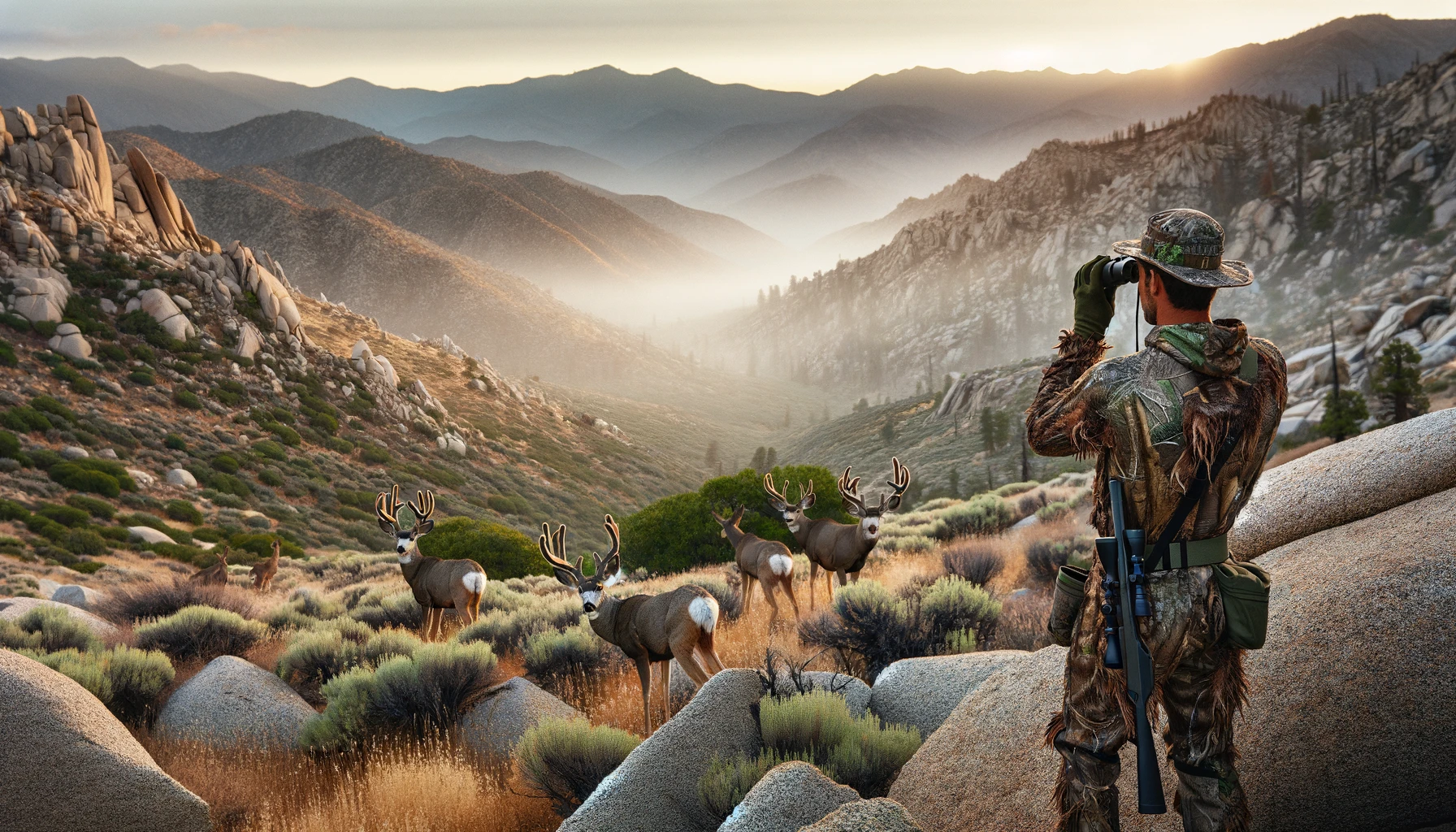
Table of Contents
Embarking on the journey to become a mule deer fanatic is to embrace the challenge of pursuing one of North America’s most majestic and elusive game animals. Mule deer, with their distinctive large ears and bounding gate, inhabit some of the continent’s most breathtaking landscapes. This guide is designed to equip you with the knowledge, skills, and respect for nature needed to pursue these remarkable creatures effectively.
Mule deer are highly adaptable creatures, with habitats ranging from the dense forests and mountainous regions of the West to the arid deserts of the Southwest. Understanding their biology and behavior is crucial for any hunter. This includes recognizing the differences between subspecies, such as the Rocky Mountain mule deer and the desert mule deer, and adapting your strategies accordingly.
Mule deer are known for their seasonal migrations, moving from high-altitude summer ranges to lower elevations in the winter. These migrations can cover significant distances, and understanding these patterns is key to locating them throughout the year.
Quality optics are essential for spotting mule deer in vast, open landscapes. A durable, high-power binocular and spotting scope can help identify animals from afar, reducing unnecessary stalking and increasing your chances of a successful hunt.
Mule deer have keen senses. Investing in quality camouflage that matches the terrain and practicing strict scent control can give you the edge you need to approach undetected.
Whether you prefer a rifle, bow, or muzzleloader, selecting the right weapon for your hunt and mastering its use is paramount. Consider the typical ranges you’ll be shooting, the terrain, and the time of year when making your choice.
The vast habitats mule deer occupy often lend themselves well to spot-and-stalk hunting. This method requires patience, stealth, and a deep understanding of the deer’s behavior and the terrain.
Setting up ambushes along known travel corridors or near food sources can also be highly effective, especially during the rut when mule deer are more predictable.
While not as commonly used as in whitetail hunting, strategic use of calls and decoys can sometimes lure in a curious or territorial buck.
Habitat Preservation: Engage in or support conservation efforts aimed at preserving mule deer habitat. This includes participating in local wildlife management programs and advocating for the protection of migration corridors.
Ethical Harvesting: Commit to ethical hunting practices, aiming for clean, quick kills. This respects the animal and ensures suffering is minimized. Know your weapon’s effective range and practice regularly to maintain accuracy.
Mentorship: Share your knowledge and passion with new hunters. Mentorship is vital for passing on ethical hunting traditions and skills to the next generation.
Continuous Learning: Stay informed about mule deer research, hunting regulations, and conservation issues. Attend workshops, join hunting and conservation groups, and participate in forums to deepen your understanding and contribute to the community.
Physical Fitness: Mule deer hunting often involves traversing difficult terrain and long stalks. Regular physical conditioning, including cardio and strength training, will improve your endurance and ability in the field.
Mental Resilience: Patience and persistence are crucial. Develop mental toughness to cope with challenging conditions, long waits, and, at times, unsuccessful hunts. Viewing each experience as a learning opportunity fosters growth and resilience.
By incorporating these advanced strategies and ethical considerations into your mule deer hunting practice, you not only enhance your success in the field but also contribute to the conservation of these magnificent animals and their habitats. Hunting is not just about the pursuit but also about understanding and respecting the natural world, ensuring that mule deer and other wildlife populations thrive for generations to come.
Becoming a mule deer fanatic is a journey that demands dedication, respect for the animal, and an unending desire to learn and adapt. It’s a pursuit that challenges both the body and the mind, offering unparalleled rewards in the beauty of the hunt and the majesty of the mule deer.
A hunting rifle is more than just a tool it’s a trusted companion in the…
Choosing the best tree stands under $300 is one of the smartest investments a hunter…
When dark clouds roll in and rain starts falling, many hunters pack up their gear…
Competitive shooting requires skill, precision, and the right equipment. Whether you're a seasoned competitor or…
The world of archery is undergoing an exciting evolution. What once were purely mechanical tools…
Welcome to the latest 2025 hunting-season guide, tailored for readers of TheShootingGears. Whether you’re carving…
This website uses cookies.